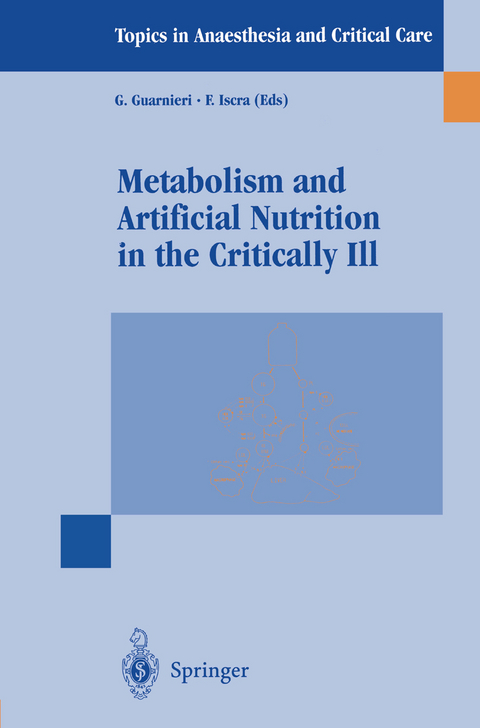
Metabolism and Artificial Nutrition in the Critically Ill
Springer Verlag
978-88-470-0042-1 (ISBN)
Basics and methods.- 1 — Substrate metabolism in critical illness.- 2 — Measurement of the body composition.- 3 — Energy and ATP: Costs and benefits.- 4 — Indirect calorimetry in the critically ill: Theoretical aspects and practical problems.- Local and systemic effects on metabolism.- 5 — Hormonal response of the hypothalamo-pituitary-adrenal axis in injury.- 6 — Sympathetic nervous system and metabolism.- 7 — Regional and systemic metabolic effects after surgical injury.- 8 — What about metabolism and the glutathione system?.- 9 — Carbohydrate and insulin activity in critically ill patients.- 10 — Muscle catabolism, amino acid flux and protein turnover in injury.- Tpn vs ent nutrition — cost and benefits.- 11 — Total parenteral nutrition vs total enteral nutrition in critically ill patients: Costs and benefits.- New strategies on metabolism and nutrition.- 12 — Hormone and growth factors in intensive care patients: Anabolic strategy or utopia?.- 13 — Which metabolic strategies in the early phase of injury?.- 14 — Effects of artificial nutrition on the immune system cells.- 15 — Selective antioxidants and early artificial nutrition as prevention of multiple organ failure.- 16 — Pharmacological nutrition in ICU patients.- Nutrition — steps for the future.- 17 — Metabolism and nutrition in the critically ill: Steps for the future.- Gut and nutrition.- 18 — The gut in healthy conditions.- 19 — The gut in local and systemic disease.- 20 — Bacterial translocation.- 21 — Gut and nutrients.- Old dilemma or new strategies.- 22 — Parenteral vs enteral nutrition.- Main symbols.
| Erscheint lt. Verlag | 1.2.1999 |
|---|---|
| Reihe/Serie | Topics in Anaesthesia and Critical Care |
| Zusatzinfo | 5 Illustrations, black and white; XIV, 237 p. 5 illus. |
| Verlagsort | Milan |
| Sprache | englisch |
| Maße | 155 x 235 mm |
| Themenwelt | Medizin / Pharmazie ► Gesundheitsfachberufe ► Diätassistenz / Ernährungsberatung |
| Medizin / Pharmazie ► Medizinische Fachgebiete ► Intensivmedizin | |
| Medizin / Pharmazie ► Medizinische Fachgebiete ► Notfallmedizin | |
| Studium ► 1. Studienabschnitt (Vorklinik) ► Biochemie / Molekularbiologie | |
| ISBN-10 | 88-470-0042-4 / 8847000424 |
| ISBN-13 | 978-88-470-0042-1 / 9788847000421 |
| Zustand | Neuware |
| Haben Sie eine Frage zum Produkt? |
aus dem Bereich


